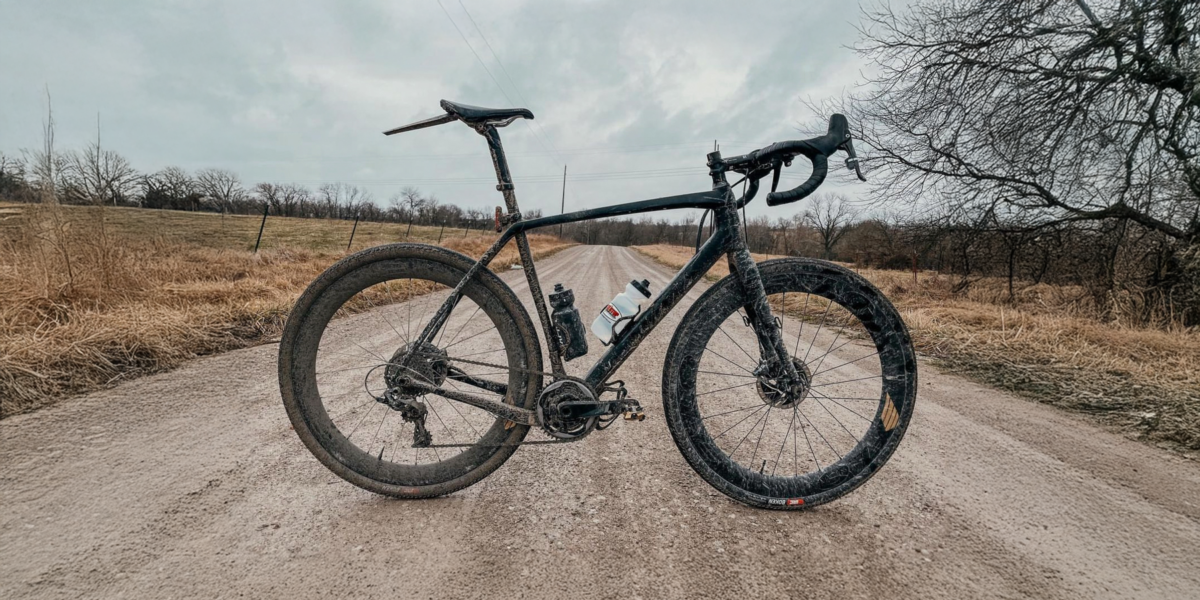Rolling Resistance in One Line
Engineers like first-principles. In its simplest form, rolling-resistance force is
Frr=CrrN
where Crr is the coefficient of rolling resistance and N is the normal load (your total weight on the wheels). Power lost is Prr=Frrv with your speed. Two variables—easy enough.
On perfectly smooth pavement Crr can be as low as 0.002–0.003 for a good road tire. Change only the surface, keep the same wheel and rider, and that number climbs toward 0.006–0.010 on coarse gravel. Double or triple the coefficient and you double or triple the watts bled away. That is why rolling resistance “hits harder” off-road.
Rubber, Rocks, and Hysteresis
When a tire rolls it constantly squashes and un-squashes. Rubber is not a perfect spring; some of the energy you put in as it deforms comes out as heat. Engineers call that energy loss hysteresis—the area inside the “squash–release” curve. Think of squeezing a foam stress ball: you don’t get all the energy back when you let go.
Gravel exaggerates the effect because every pebble is a miniature speed-bump. The tire carcass flexes more, the hysteresis loop grows, and so does Crr. Narrow, high-pressure road slicks hardly deform on tarmac, so the hysteresis penalty is tiny by comparison.

Comparing Road, Triathlon, and Gravel
A gravel cyclist can experience an additional 25 watts of loss due to higher rolling resistances on gravelin extreme cases. A simple back of the envelope cost looks like this. A fit rider putting out 250 W for three hours (typical gravel race) spends 2,700 kJ. Rolling resistance alone eats 270 kJ—the energy in a large energy bar—more than the triathlete’s 162 kJ for the same duration. That’s why nutrition seems trickier off-road: the terrain taxes you invisibly.
The Hidden Second Half: Impedance Losses
Lab drums measure hysteresis well, but impedance—energy lost because bike-and-rider vibrate instead of rolling smoothly—only appears on real terrain. Picture jogging across cobbles in dress shoes (rigid) versus cushy running shoes. Shoes that are too stiff hammer your body; you instinctively slow down. The bike equivalent is a tire inflated too hard for the surface. It bounces instead of flowing, and every bounce costs momentum.
On a time-trial course a triathlete might run 75–90 psi. On gravel, that would feel like riding a jackhammer. You’d lose more to vibration than you’d gain from lower hysteresis. The sweet spot is lower, sometimes dramatically so: 25–40 psi for modern 40–45 mm gravel casings, depending on weight. The correct pressure is the point where the sum of hysteresis plus impedance is minimal.
Why Gravel Tires are Wider and Softer
Wider casings spread load, lowering contact-patch pressure. That lets you run lower inflation without pinch-flat risk and without folding the sidewall in corners. Lower pressure means the tire bulges over obstacles instead of riding up and over them. Less vertical motion = fewer impedance losses.
A common concern is “but wider tires are heavier.” True, a 45 mm gravel tire may weigh 150 g more than a 28 mm road slick. Yet rolling-resistance savings over a long gravel event dwarf the 0.3 kg weight penalty. You’ll spend minutes more fighting energy loss if you stay narrow and hard.
Finding Your Pressure Sweet Spot
- Start with a chart. Refer to our charts for the ideal pressure.
- Add terrain context. Looser, rockier courses push you to the lower end; hard-packed dirt lets you inch upward.
- Run the bounce test. In a seated coast on your gravel loop, watch the bars. If they chatter, drop 2–3 psi. If the rims ping rocks or feel vague in corners, add 2–3 psi.
- Record and repeat. Like chain-lube intervals, jot pressures with date and course. Patterns emerge.
A good pressure setup often feels slower at first—like driving on a deflated tire—but lap splits say otherwise because momentum is preserved.
Bringing Road and Triathlon Lessons to Gravel
- Aerodynamics still matter—especially in solo gravel events where there’s no pack shelter. Deeper rims make sense G700.
- Tread counts. Slicks win on pavement; file tread or minimal knobs win on fast dirt. Full knobs only pay back in mud or sand. Rolling resistance rises steeply with knob height.
- Sealant over tubes. Latex tubes save watts on the road because they reduce hysteresis versus butyl. In gravel, tubeless sealant plus lower pressure beats even latex tubes for both resistance and puncture protection.
Triathletes obsess over drivetrain friction—a 5 W gain is big news. Gravel riders can gain 20 W just by dialing in tire casing and psi. That is free speed, no ceramic pulley upgrade required.
Final Thoughts
Rolling resistance is the silent tax of cycling, and gravel levies a higher rate than road or triathlon. Hysteresis and vibration, both amplified by rough surfaces, can cost tens of watts. The simplest, cheapest fix is dialing in tire width and pressure. The next time you grab your pump, take an extra five minutes with the pressure gauge. Your legs (and finish time) will thank you.

Co-founder at FLO Cycling. Jon manages the day to day operations and acts as the lead engineer for all FLO products.
